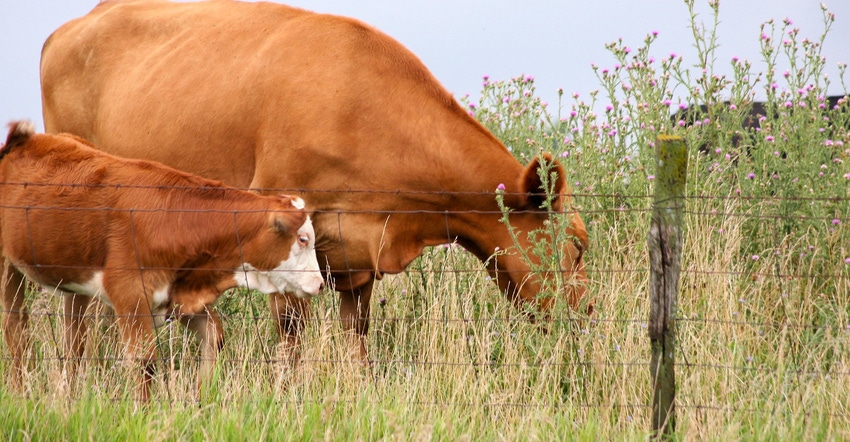Limiting stress factors in calves improves health, performance and gains.
June 3, 2020

In a time when getting every dollar counts in the beef industry, Patrick Davis, University of Missouri Extension regional livestock field specialist, says farmers can focus on reducing stress of spring calves, as it is key to performance and premiums.
“For a cow-calf producer, selling more pounds of healthy calf at weaning time improves operation profit potential,” he adds.
One of the best ways to improve health and performance of these calves is an often overlooked practice of fence-line weaning.
What is fence-line weaning?
Fence-line weaning improves post-weaning calf weight gain. University of California-Davis research shows gain of fence-line weaned calves improved by 95% in the first two weeks and 31% over the 10-week period after weaning compared to the traditional weaned calves. Furthermore, the research showed fence-line weaned calves did not go off feed, had less vocalization and less stress activity compared to traditional weaned calves.
“This shows fence-line contact between cow and calf during the weaning process helps reduce stress activity and results in better post-weaning performance,” Davis says.
Fence-line weaning of calves promotes activities post weaning that improve calf health. Ohio State University research reported fence-line weaned calves had reduced incidence of respiratory disease, which is a major cause of health issues post weaning. Improved gain and reduced respiratory disease should lead to better calf performance and cattle operation profit potential, he adds.
Develop fence-line plan
Davis warns that fence-line weaning may require some facility modification. A substantial fence should be created between the calves and the cows.
Types of fencing systems may include barbed wire overlaid with woven wire, electric wire fence, or electrified wire outrigger approximately 12 to 15 inches on the calf side of the fence. Davis urges cattle producers using electric fence in the weaning process to make sure it is really hot and the calves are adapted to it.
“Weaning calves in familiar surroundings will help reduce stress during weaning time,” he says. Davis urges cattle producers to acclimate the cow-calf pairs to the weaning pasture before weaning the calves. Also, plan to have high-quality grass in front of the calves during the weaning period.
Davis says farmers should expect anywhere from seven to 14 days for the fence-line weaning process to be successful. Once the cows and calves are not associating with each other at the fence, the calves can be moved to a permanent pasture.
Source: The University of Missouri Extension is solely responsible for the information provided and is wholly owned by the source. Informa Business Media and all its subsidiaries are not responsible for any of the content contained in this information asset.
You May Also Like



